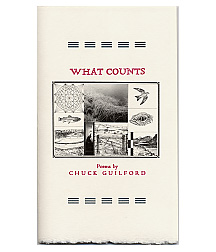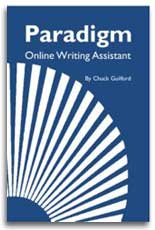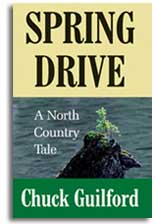Give an Example
Examples allow readers to see, touch, hear, taste, and feel the actual stuff your thoughts are made of. Notice how often a paragraph will say, in the second or third sentence, "for instance" or "for example." This is how writers introduce an actual incident or object to prove or illustrate the point under discussion. The example may be a brief physical description:
I can still remember her imitation of a frog. Puffing out her cheeks and hopping around the room, she seemed almost amphibian as she croaked out a mating call.
Or even a story:
Once I'd been suspended from school for a minor infraction, which I won't go into here, and she still wanted me to turn in my tree project, but would give me no credit for it. Even so, I turned it in, doing an extra good job, and she somehow managed to give me a B for that grading period.
Either way, examples get readers involved. Examples allow readers to see, touch, hear, taste, and feel the actual stuff your thoughts are made of.
Examples are also easy to fold into your paper. You can often slip a brief example in between two guide sentences in your skeleton essay, or you can might use one or two extended examples to develop a whole paragraph.
Activities
6.10 Illustrate each of the following statements with a fictional narrative or descriptive example.
a. Dan tends to be messy.
b. The furniture was quite uncomfortable.
c. My street needs to be repaved.
d. The food looks unappetizing.
e. The trees were diseased.
6.11 Fold a brief example between two of the guide sentences in your skeleton essay.
Example:
Reason 3.2: She is demanding but fair.
Details: Once I had been suspended from school for a minor infraction, which I won't go into here, and she still wanted me to turn in my tree project, but would give me no credit for it. Even so, I turned it in, doing an extra good job, and she somehow managed to give me a B for that period.
Reason 3.3: She stresses practical application of the material.
Offer an Explanation
This kind of development offers refinement of your general principles.
Sometimes a point made in your thesis sentence, a topic sentence, or a guide sentence needs elaboration and clarification.
That is, the reader may pick up the general outline of what you're saying, but a second sentence or two may be needed before the full meaning comes across. The first two sentences of this paragraph work like that. The second one explains the first, and the next two (including this one) carry the process even further. Each sentence, after looking back at the previous one to see if it tells the whole story with perfect clarity, goes on to fill in the gaps and make the meaning more precise.
This kind of development offers refinement of your general principles. It's not unusual, therefore, to see a topic sentence followed by a brief explanation, followed by an example or illustration:
She covers taxonomy. We studied Thomas Linnaeus and his system of binomial nomenclature, learning the reasons for the system as well as the basic principles of operation, and we learned how to classify specific species by careful observation of their identifying characteristics.
Not every topic sentence or guide sentence needs further explanation, but if you've used any words that readers might have trouble with, or if readers might get only a rough idea of your real point, you could probably use a sentence or two of clarification and elaboration.
Activities
6.12 Add a brief explanatory comment to make the meaning of each of the following sentences more clear.
a. Shelley is an easy person to be with.
b. Our house can get cold in the winter.
c. This watch is quite valuable.
d. The park is dangerous at night.
e. The new prices were more reasonable.
6.13 Find a sentence in your skeleton essay that could use some clarification. Add to it a sentence or two of explanation. If possible, follow the explanation with an example.




